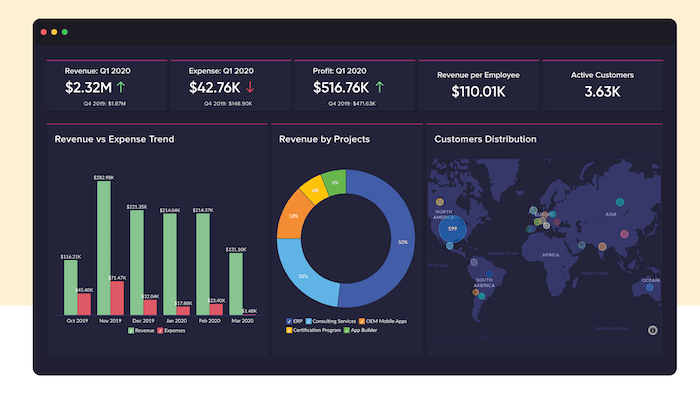
Logi lets you create dashboards, reports, and data visualizations within a single platform and customize these reports to remain on-brand. White-labeling is just one of the many advanced capabilities that Logi’s embedded analytics platform offers.
#White label business intelligence application software
> Related: 5 Factors to Consider When You White Label BI Software << Selecting a White-Label Analytics Solution Adding white-label capabilities to your embedded analytics not only improves the end user experience it also helps your company stay ahead of competitors.

White-label analytics solutions provide a number of benefits to end users, including a visually appealing user experience and increased user adoption. Benefits of Using White-Label Analytics & BI in Your Application With white-label analytics, application teams can adjust every aspect of the embedded analytics without worrying about a disjointed user experience. White-label analytics lets developers match their application’s fonts, colors, and branded design themes, even if the analytics capabilities are technically being built separately from the application. Good white-labeling can increase user adoption of BI and embedded analytics by ensuring brand consistency and a seamless user experience. When you white-label BI software, you ensure the dashboards and reports in your application look and feel like the rest of your software. What Does It Mean to White-Label Analytics? Application providers-including original equipment manufacturers (OEMs), independent software vendors (ISVs), and software as a service (SaaS) companies-are sensitive about ensuring the look and feel of the analytics matches their application, their company, and their brand.

When it comes to embedding BI user interfaces into existing applications, white-labeling is usually a top requirement. Each vendor delivers varying levels of flexibility for rebranding from simple logo and colour changes to being able to even access the CSS and HTML of the platform to change fonts, build in bespoke actions, and create pixel-perfect dashboard designs.White-labeling is the ability to make embedded analytics and business intelligence (BI) look like your own application, not someone else’s. Several analytics vendors, like Yellowfin, offer white label Business Intelligence for embedding. This customization of white label Business Intelligence enables software companies to deliver a consistent user experience between the core software product and the analytics module. Embedding a white label Business Intelligence platform means the software company does not have to expend resources on building their own BI module while still ensuring the embedded BI platform appears to be an integrated part of the product. White label Business Intelligence is chosen by software businesses that want to embed a third-party Business Intelligence platform into their own software application and rebrand that platform to match the look and feel of the rest of their product. Why use white label Business Intelligence?

White label Business Intelligence (BI) is a BI platform that can be rebranded and its appearance customized so that it can be visually integrated with the software application into which it is embedded. White label Business Intelligence, also known as white label analytics, is a subset of embedded analytics, which refers to when a software company embeds a third party Business Intelligence platform in their software product.


 0 kommentar(er)
0 kommentar(er)
